Abstract
Although the Institute of Medicine states that a patient problem list should have a prominent place in the computer-based patient record, the design and function of the problem list is not a matter of universal agreement. Developer experience with implementation has been inconsistent, in part because of confusion on data standards, uncertain user acceptance of data entry, and minimal rewards for the clinician. I propose that necessary features of the problem list include: 1) clinical focus, 2) codification of problems, 3) support for problem resolution, 4) historicity of problems, 5) support for multiple clinical views, 6) integration of maintenance functions with workflow, 7) support for administrative reporting, and 8) integration with useful clinical tools. I describe the strategies that we employed to meet these goals while implementing the problem list in a computerized patient record serving a large, complex clinical enterprise. I further report the successful achievement of those goals based upon audits six months after implementation.
Full text
PDF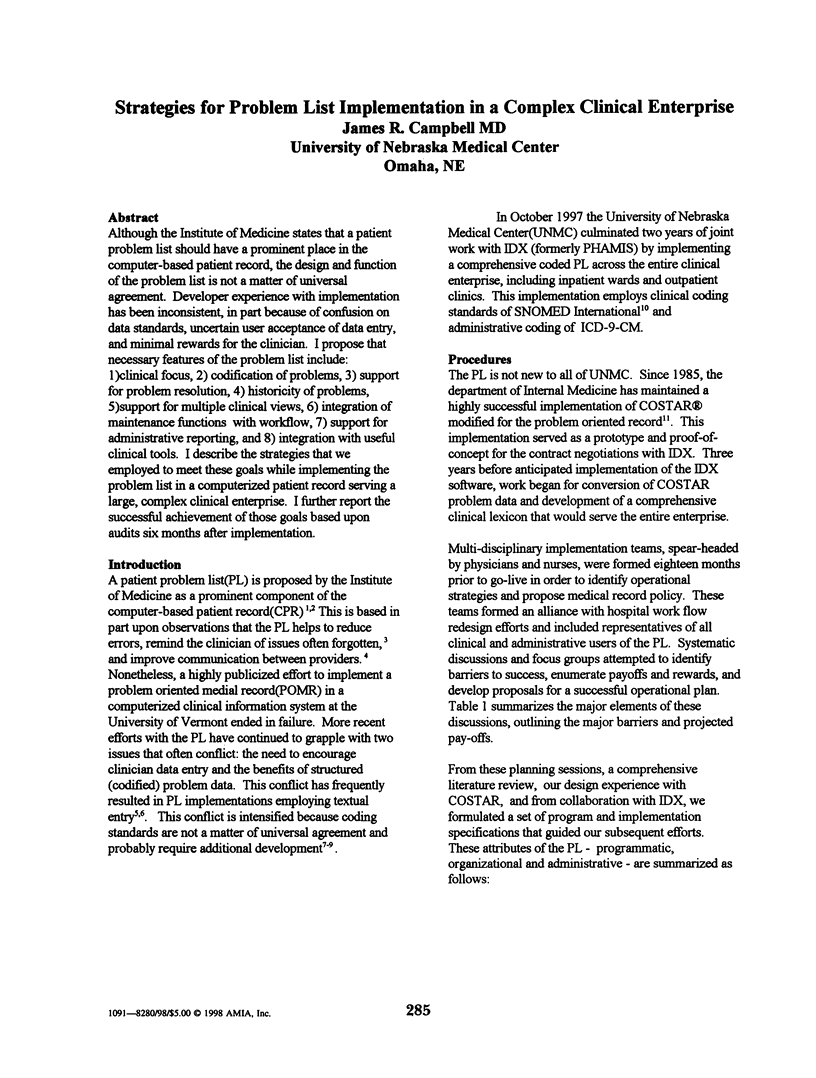
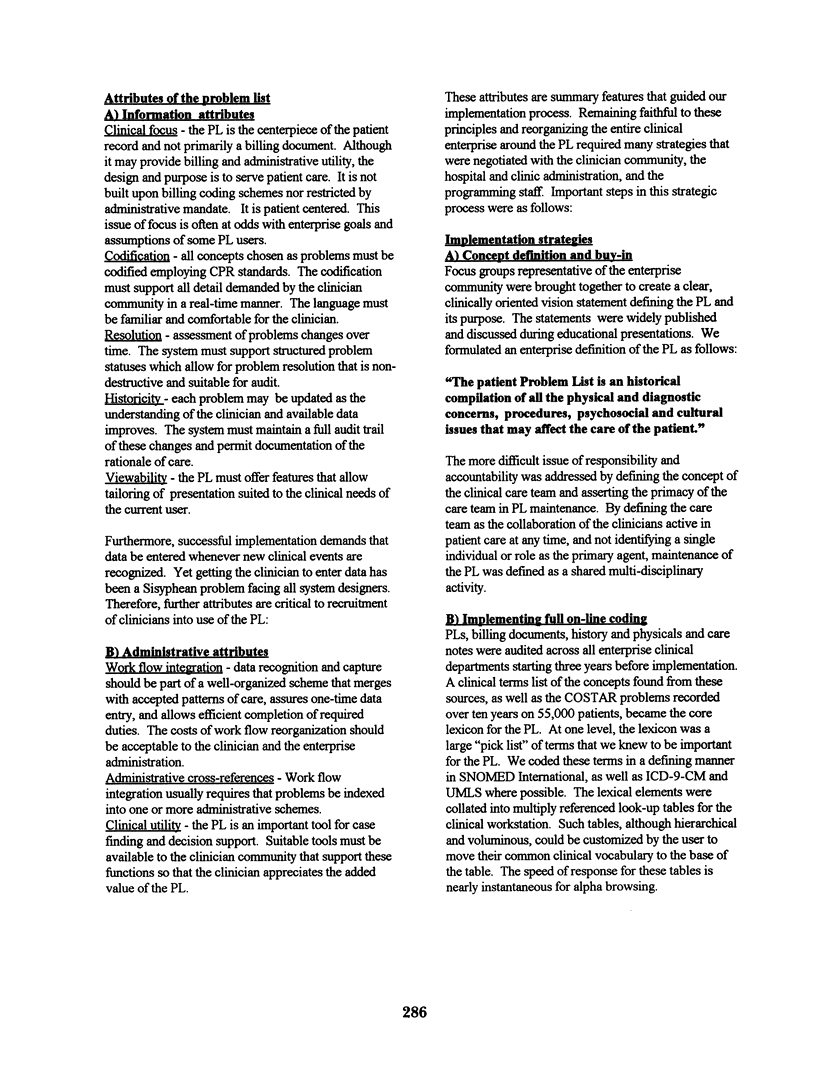
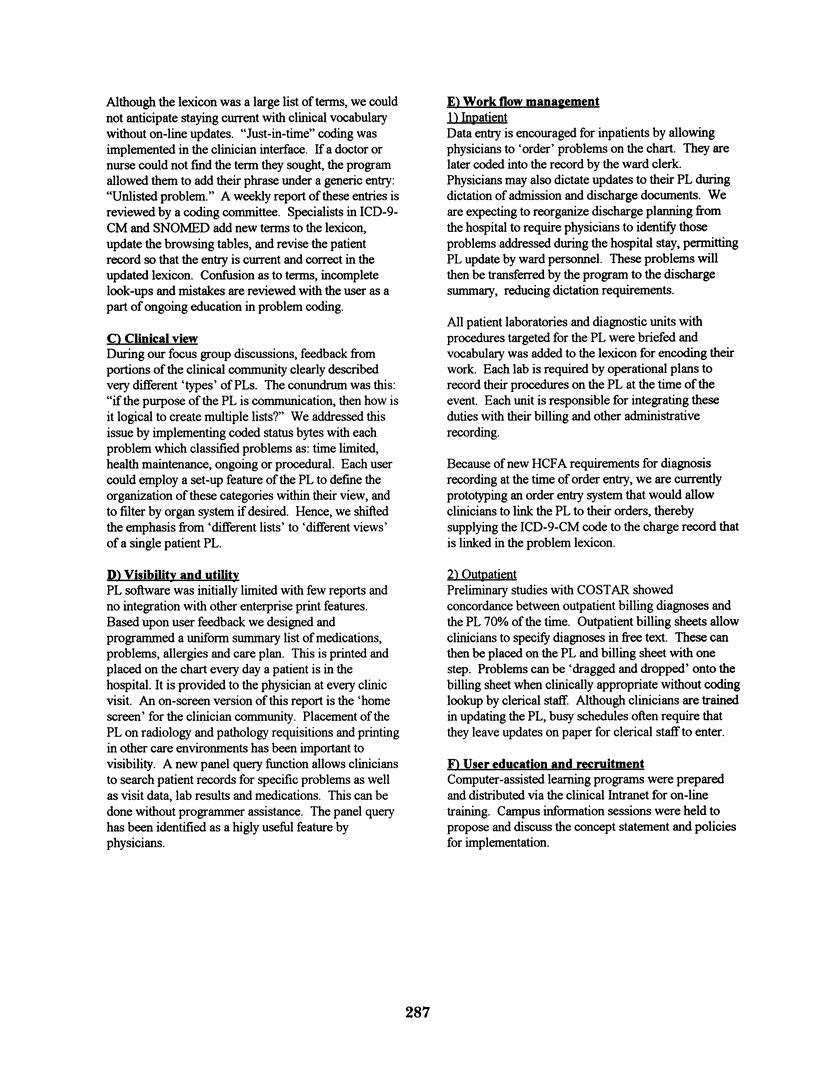
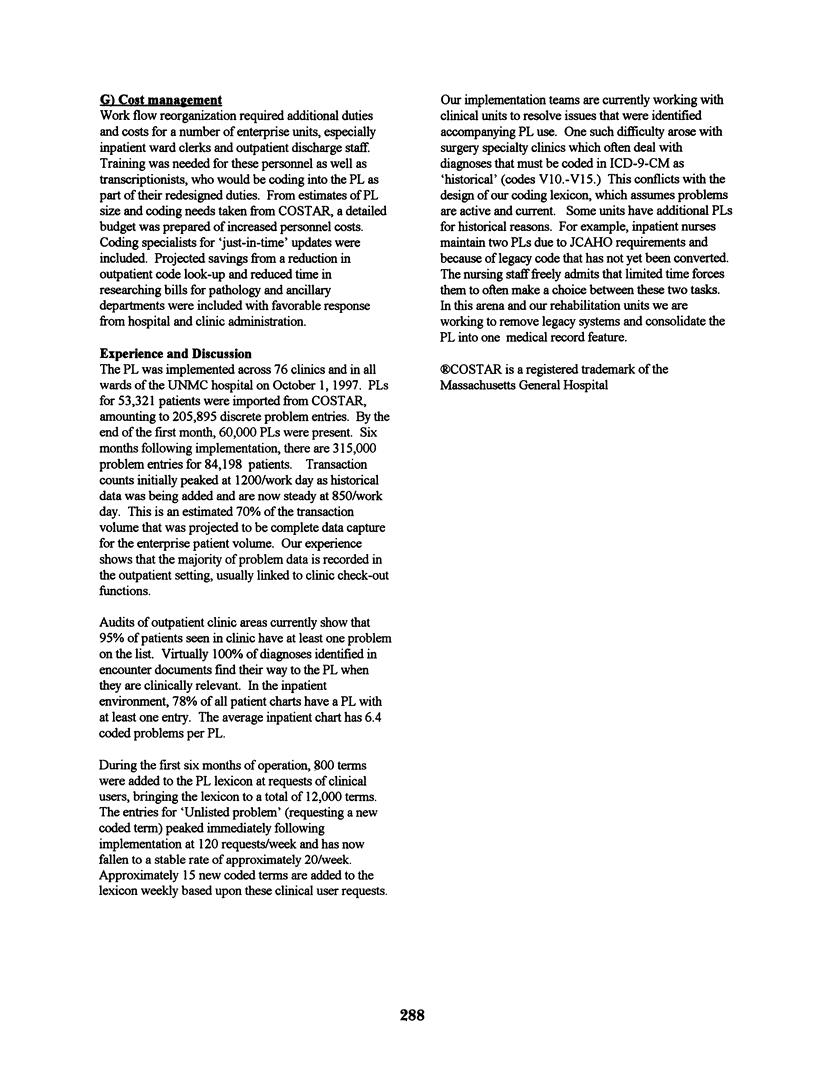
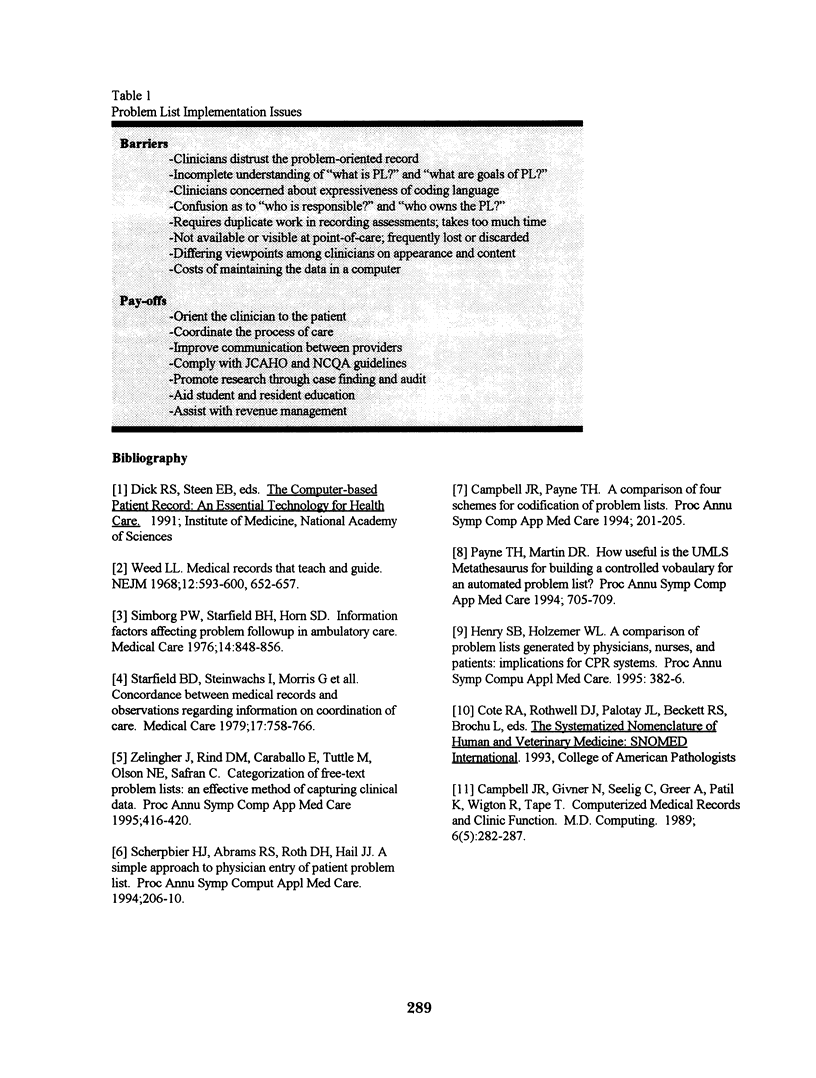
Selected References
These references are in PubMed. This may not be the complete list of references from this article.
- Campbell J. R., Givner N., Seelig C. B., Greer A. L., Patil K., Wigton R. S., Tape T. Computerized medical records and clinic function. MD Comput. 1989 Sep-Oct;6(5):282–287. [PubMed] [Google Scholar]
- Campbell J. R., Payne T. H. A comparison of four schemes for codification of problem lists. Proc Annu Symp Comput Appl Med Care. 1994:201–205. [PMC free article] [PubMed] [Google Scholar]
- Henry S. B., Holzemer W. L. A comparison of problem lists generated by physicians, nurses, and patients: implications for CPR systems. Proc Annu Symp Comput Appl Med Care. 1995:382–386. [PMC free article] [PubMed] [Google Scholar]
- Scherpbier H. J., Abrams R. S., Roth D. H., Hail J. J. A simple approach to physician entry of patient problem list. Proc Annu Symp Comput Appl Med Care. 1994:206–210. [PMC free article] [PubMed] [Google Scholar]
- Simborg D. W., Starfield B. H., Horn S. D., Yourtee S. A. Information factors affecting problem follow-up in ambulatory care. Med Care. 1976 Oct;14(10):848–856. doi: 10.1097/00005650-197610000-00005. [DOI] [PubMed] [Google Scholar]
- Starfield B., Steinwachs D., Morris I., Bause G., Siebert S., Westin C. Concordance between medical records and observations regarding information on coordination of care. Med Care. 1979 Jul;17(7):758–766. doi: 10.1097/00005650-197907000-00006. [DOI] [PubMed] [Google Scholar]
- Weed L. L. Medical records that guide and teach. N Engl J Med. 1968 Mar 14;278(11):593–600. doi: 10.1056/NEJM196803142781105. [DOI] [PubMed] [Google Scholar]
- Zelingher J., Rind D. M., Caraballo E., Tuttle M. S., Olson N. E., Safran C. Categorization of free-text problem lists: an effective method of capturing clinical data. Proc Annu Symp Comput Appl Med Care. 1995:416–420. [PMC free article] [PubMed] [Google Scholar]


